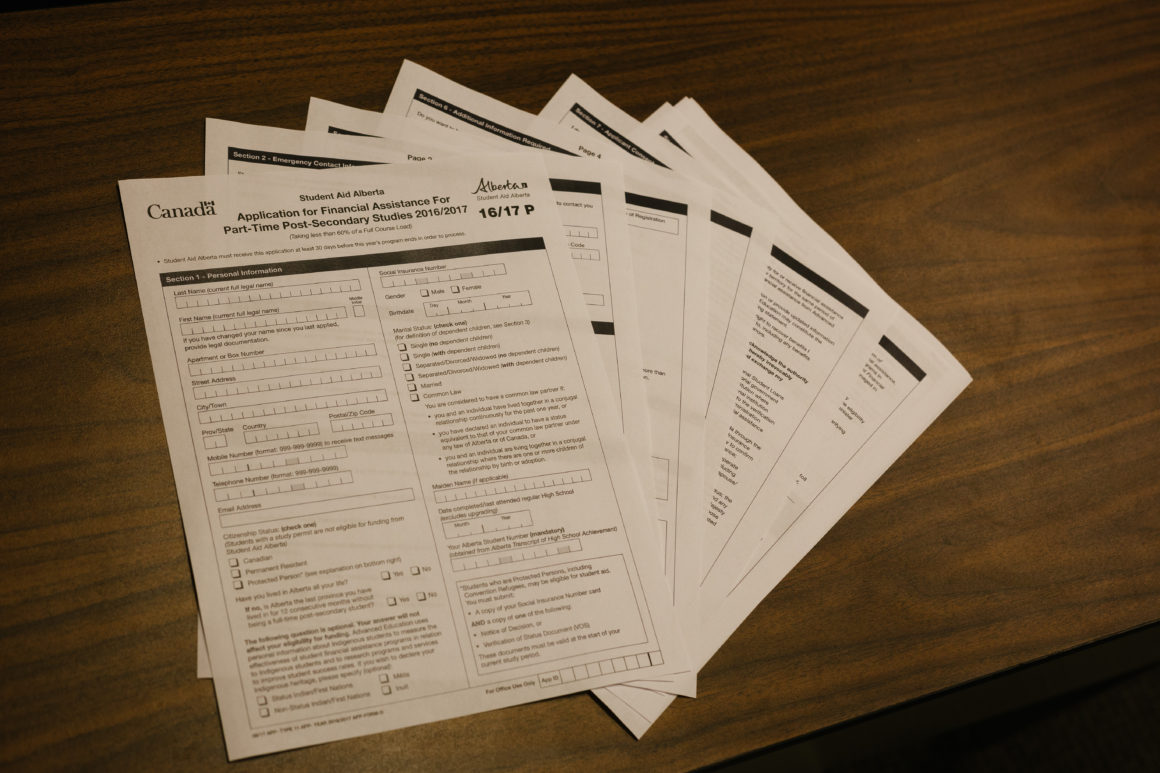
Student loan applicants could increase 10 per cent in Alberta
By Scott Strasser, September 20 2016 —
As the economic downturn continues to plague Alberta, more post-secondary students are taking out loans to ease the financial burden.
According to Student Aid Alberta, the province projects a 10 per cent increase in student loan applicants this year.
“It’s correct to say we are seeing the applications trend up,” said Student Aid Alberta executive director Maggie DesLaurier. “When you look back the last few years, we’ve been seeing those steady increases in the number of students accessing our student loan program.”
While 70,461 students took out loans in 2015–16, Student Aid Alberta expects that number to reach 77,000 students this year.
The total dollar amount in 2016–17 is projected to be $579 million in student loans, up from $537 million last year.
While the province’s economic downturn plays a factor, DesLaurier said the increase in applications could also be due to Student Aid Alberta’s recent programming changes. These include increasing living allowances to match inflation, increasing loan limits, allowing for childcare costs and doubling the Alberta low-income grant from $120 to $250 in 2016.
DesLaurier said eligibility requirements have also eased and that applications were made available a month earlier than usual.
“We’re always looking for ways to improve student loan programming to meet the needs of students,” she said.
Students’ Union vice-president external Tristan Bray said Student Aid Alberta’s statistics reflect the SU’s own data collection.
“I think you can’t ignore the impact the economic downturn has had,” Bray said. “Overall, students are expecting to need more loans to graduate.”
The 2016 SU annual survey came out last month. It was answered by 2,696 University of Calgary undergraduate students — roughly 10.9 per cent of the university’s total enrolment.
In the survey, 33 per cent of respondents expected to graduate with more than $20,000 of debt. There was also a 7.9 per cent increase from the 2015 survey in the number of
U of C students who experienced debt at some point during their degrees.
The survey also reported that 59 per cent of respondents worked during the academic year, with 22 per cent claiming to work 11–20 hours per week.
“My experience interacting with students is that over the summer, students were able to find fewer degree-relevant jobs,” Bray said. “There were fewer internship positions, research-type positions — the really good, degree-related jobs — for students. They were saving a little less money than summers previous.”
DesLaurier acknowledged many people return to university during an economic downturn.
“It is definitely a factor. We’ve been seeing historically that as the economy dips down there are more learners looking to go back into post-secondary studies. As a result, we see an increase in student loan applications,” she said.
According to DesLaurier, most student loan applications occur in September.
